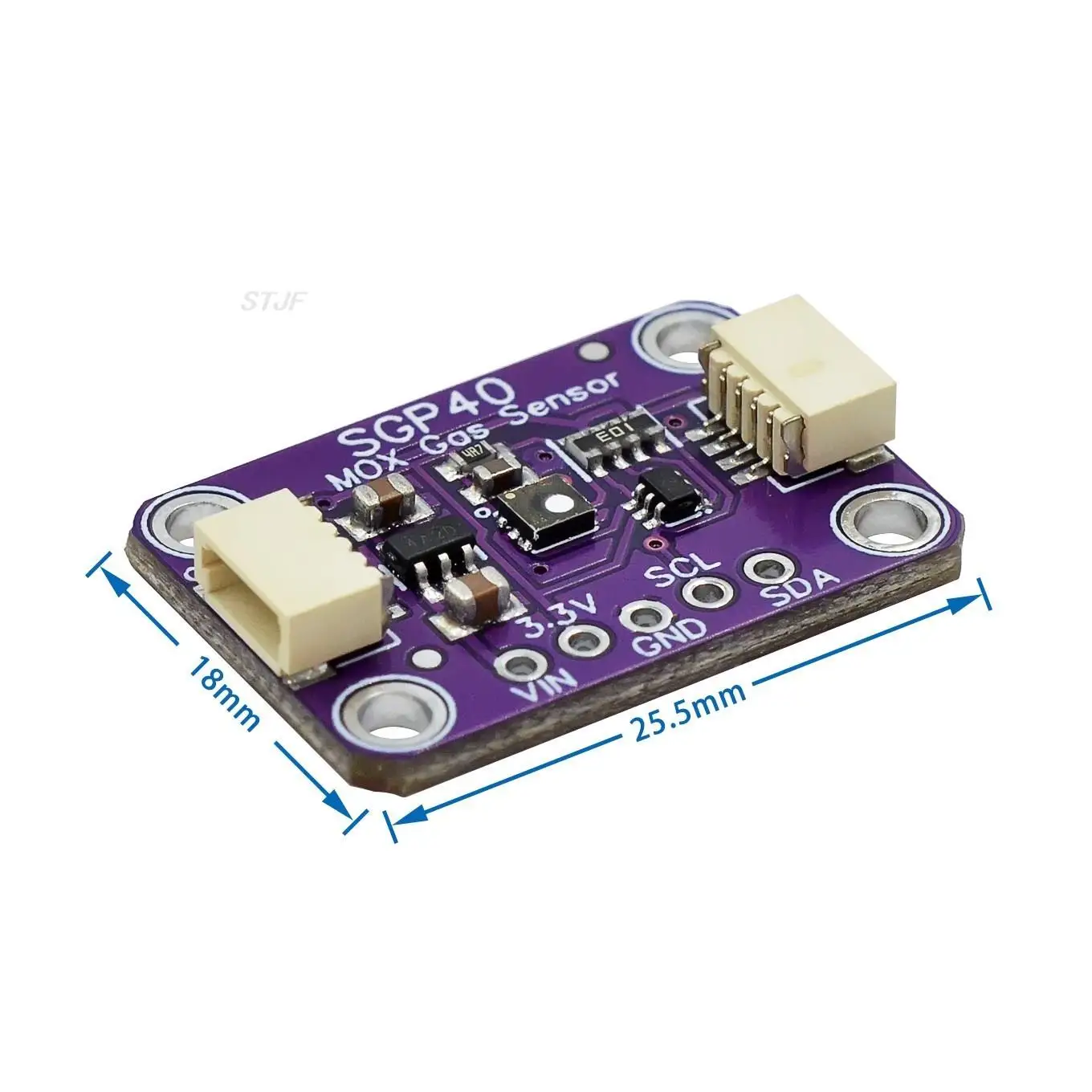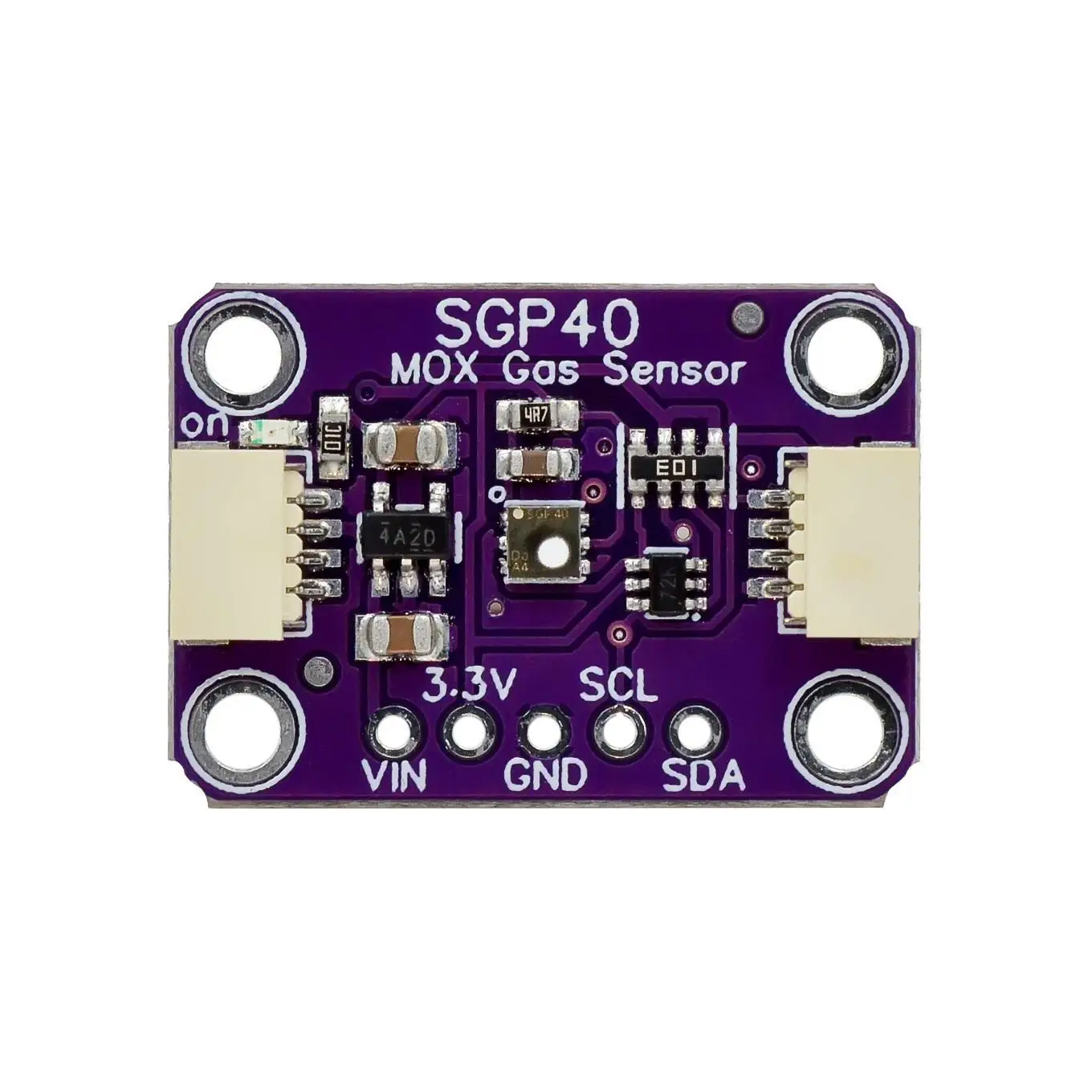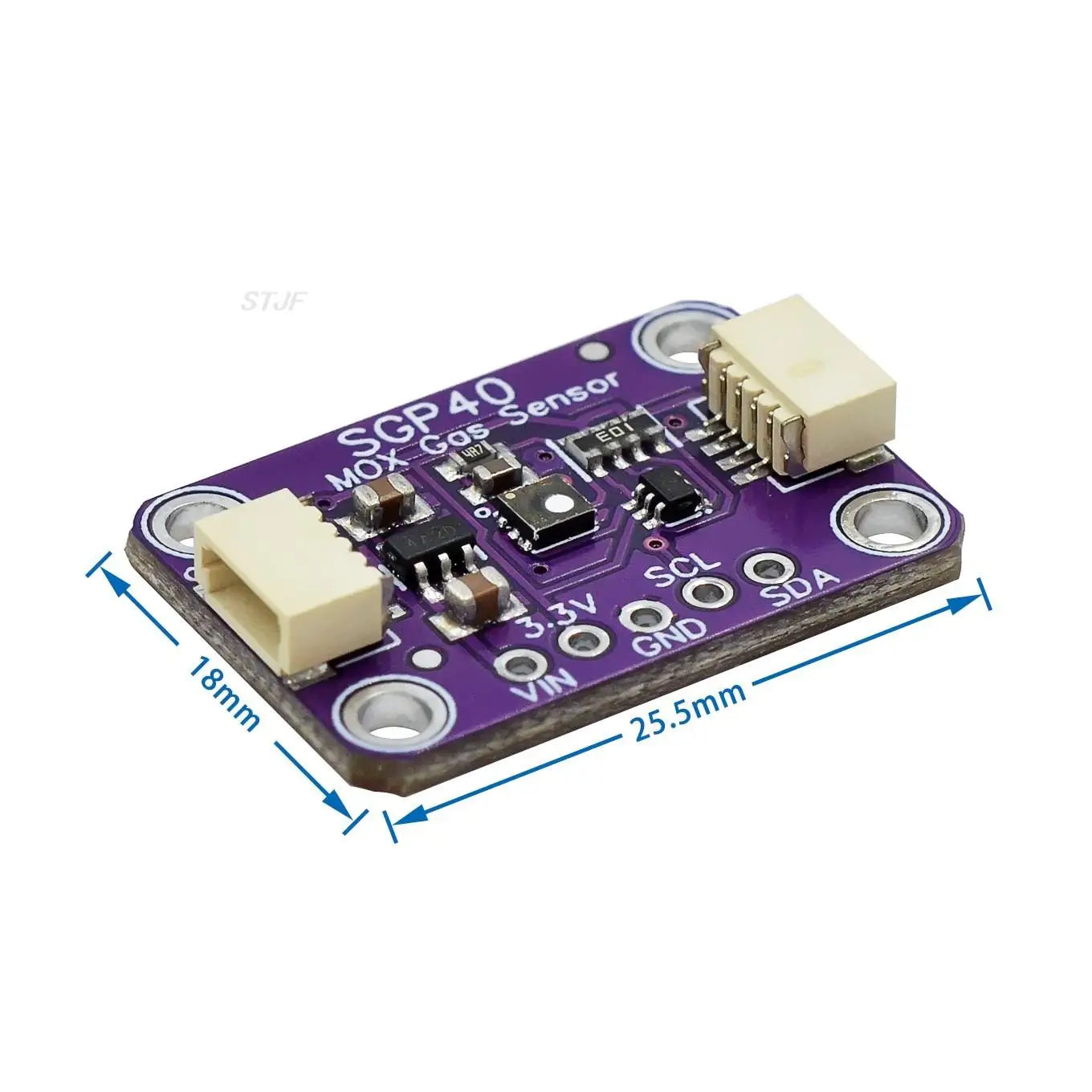Lonten Tech
Custom SGP40 Air Quality Sensor Breakthrough - VOC index For STEMMA QT/For Qwiic
Custom SGP40 Air Quality Sensor Breakthrough - VOC index For STEMMA QT/For Qwiic
Couldn't load pickup availability
*sniff* *sniff* ... Do you smell it? Instead of sticking your nose into a carton of milk, you can build a digital nose using the fully integrated MOX gas sensor SGP40 multi-pixel gas sensor. This is an excellent air quality sensor from the Sensirion sensor experts, with an I2C interface so you don't have to manage the MOX sensor's heater and analog readings. It combines multiple metal oxide sensing and heating elements on a single chip to provide a more detailed air quality signal.
The SGP40 has a "standard" hot-plate MOX sensor, as well as a small microcontroller that controls the board's power supply, reads analog voltages, and provides an I2C interface for reading. Unlike CCS811, this sensor does not require an I2C clock extension. We currently have an Arduino library that includes examples of reading raw values, also running the Sensirion algorithm to calculate VOC indices, and a Python/CircuitPython library, It can be used with Linux computers such as Raspberry Pi or our CircuitPython board.
This is a gas sensor that can detect a variety of volatile organic compounds (VOC) and H2 for indoor air quality monitoring. SGP40 is the next generation product after SGP30, but does not give TVOC/eCO2 values like SGP30. Instead, the raw signal from the sensors is processed using their software algorithm to give an overall "air quality" value ranging from 0 to 500.
Please note that as with all VOC/ gas sensors, this sensor has variability and you will need to calibrate it against known sources in order to get accurate measurements! That said, for general environmental sensors, it gives you a good idea of trends and comparisons.
Another nice element of the sensor is the ability to set humidity compensation for better accuracy. An external humidity sensor is required, and then RH% is written to the sensor via I2C, so it can better calibrate MOX sensor readings and reduce humidity/temperature based variations.
Nice sensor, huh? So we make it easy for you to move on to the next project. The surface-mount sensor is soldered to a custom PCB with STEMMA QT profile, making it easy to connect. Compatible STEMMA QT connectors on both sides are compatible with SparkFun I2C connectors. This allows you to make a solderless connection between your development board and the SGP40, or use compatible cables to link it to a variety of other sensors and accessories. QT cables are not included, but we have a variety in store
Of course, we have disconnected all the pins of the standard connector and added 3.3V regulator and level conversion, so you can use it with 3.3V or 5V systems such as Arduino Uno or Feather M4.





Share












